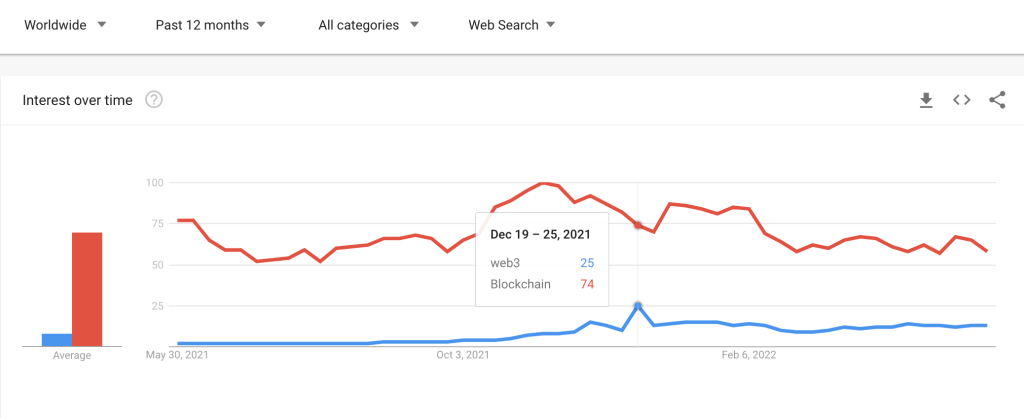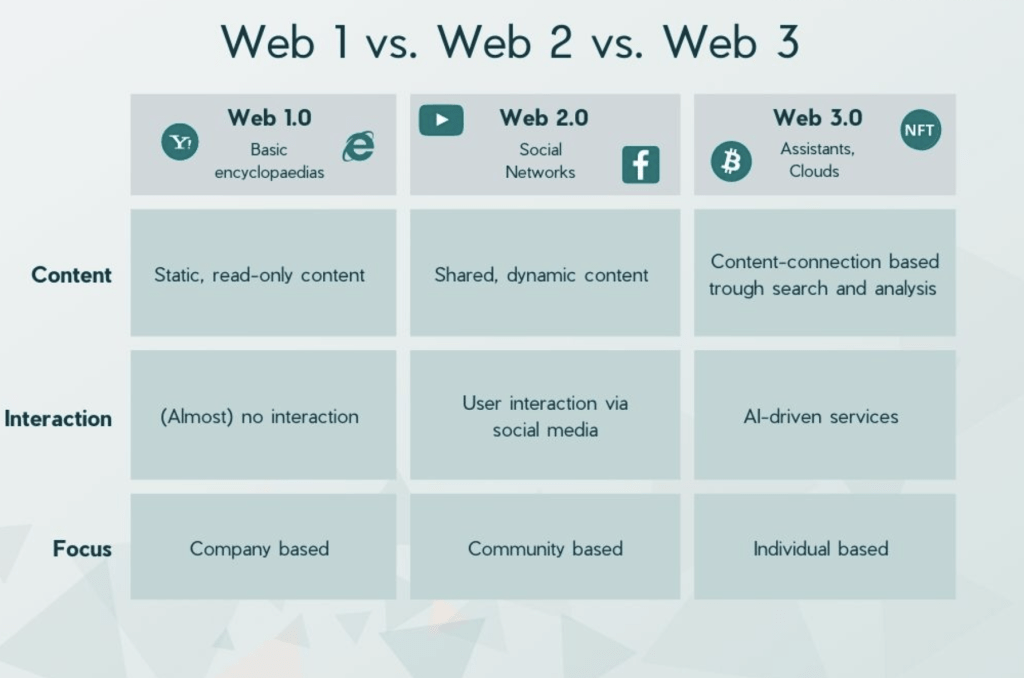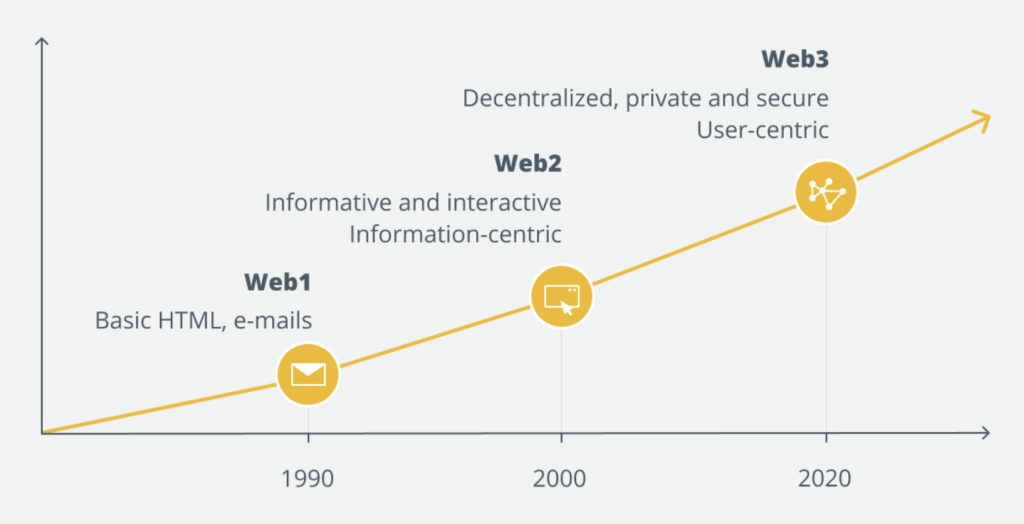
Starting from last December, the term web3 suddenly came out of the circle and entered the traditional Internet, and then began to spread the fire.
1. Web3 in the end what is it?
To clarify web3, we still need to look at Web1 and Web2 first.
This picture has been widely circulated on the Internet before, and summarized more clearly.

Web1 is the readable Internet. In Web1, we can get news and information from the network, but we can only get information almost unilaterally and cannot participate in interaction.
By Web2, there are comments, likes, private chat, posting topics and so on, so Web2 is not only readable, but also writable and interactive.
And Web3, we can not only read, can write, but also can have.
What exactly does owning mean? In fact, it comes down to “control”: we have control over the account, the data and information generated by the interaction on the platform, and the assets, etc. We can say what we want.
2. What exactly is the “control” of Web3?

So what exactly is the control of Web3? Let’s list a few simple scenarios.
1) Control over the account
In the Web2 era, we must register an account to use the platform’s services, or use WeChat, QQ and other unified accounts to log in. When your code of conduct does not meet the platform’s standards, your account may be restricted and blocked at any time.
So, in the web2 era, you actually have no control over your account.
However, in the web3 era, you can use one account to log in to all platforms, and this account is guaranteed by a series of cryptographic algorithms, game theory and other technical means behind the account, so that you have control over your account and will not be restricted or banned by the platform at will.
In other words, in Web3, your account is your own say, and will not be controlled by the centralized platform.
2) Control over data
In Web2, in order to access the services of the platform, we have to sign the terms and conditions related to data privacy before using the platform, otherwise we cannot use the related services.
In the process of using the service, a series of data will be generated, for example, on a certain treasure we have data on the preferences of goods, data on purchasing ability, data on purchasing frequency, etc. All these data may be made into user tags by the big data platform of a certain treasure, and sold to relevant stores as accurate user tags, which is why we feel that the platform recommends to us all the merchants and products we like, because, we s buying habits data tells them everything.
However, when we are sold to stores as one precise tag, we can’t get any revenue from it. We accumulated a lot of data for these platforms, which became the core assets of the platforms, but we, as the supplier and owner of the data, could not get any share of the pie.
However, in the Web3 era, the data we generate belongs to us. We can choose to open these data to the platform or to other merchants who need it, and, while opening it out, we can get the corresponding revenue. Of course, we can also choose not to open it, and we can say what we want to sell or not to sell.
Moreover, our data information is censorship-resistant, secured by cryptographic algorithms, etc., which means that no party can be forced to view our information without our consent. You can trust that in Web3, your chats with your friends are completely confidential.
So, this control is the control in the case of not revealing the privacy of data.
3) Control over assets
There is really no need to say much about the control over assets. In Web2, our assets are kept in banks, Alipay, WeChat and other large platform institutions. In addition to the physical assets, our money is just the data inside these accounts, will all the assets inside your account be frozen or go to zero one day? This is entirely possible.
However, in Web3, you have the control of your assets, and although the assets inside your wallet are also a string of numbers, as long as your private key is there, your assets are still there, and basically no one can forcibly confiscate your assets.
3. What is the relationship between Web3 and blockchain?
So, after reading these possible scenarios of Web3, it seems that we can say this about Web3.
Web3 is about breaking trust in centralized platforms or institutions as much as possible, breaking their monopoly, and taking back individual control over data, information, assets, etc.
In this way, it seems that the kernel of Web3 is back to decentralization.
And when it comes to decentralization, the first thing that comes to our mind is naturally blockchain. So, perhaps we can say that blockchain technology is the technical means to realize Web3.
It seems that all the public chain projects that have emerged so far can be classified as Web3, only that the difference in the degree of decentralization of different projects has led to the difference in the degree of these projects reaching Web3.
